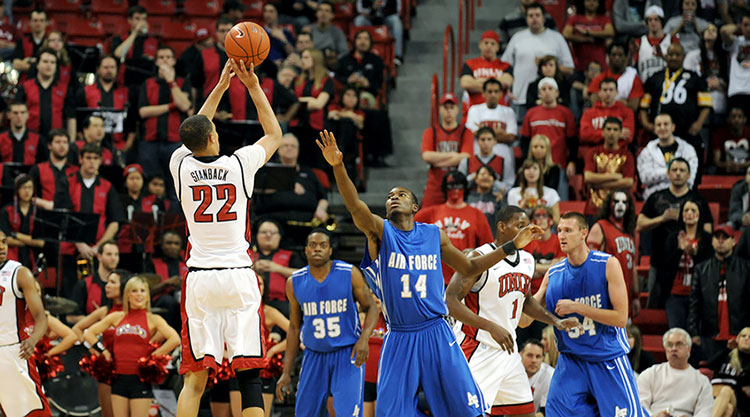Using statistics in planning ahead
At the end of each season, coaches find themselves in a reflective mode. They look back at the season and can recall various events. While they have these memories fresh in their minds and videotape to refer to, statistics can be valuable as an assessment tool, particularly in looking forward.
The same statistics used during the course of a season to make decisions can also be used in an overall evaluation of the season. What coaches may find however in terms of looking at statistics for the whole season are certain patterns and correlations they were not aware of during the season.
 While the statistics discussed in this article are not the only ones coaches may use for evaluation, I believe they will be helpful to guide them in their future decisions. For each of the statistics I have presented ways in which data can be used by coaches.
While the statistics discussed in this article are not the only ones coaches may use for evaluation, I believe they will be helpful to guide them in their future decisions. For each of the statistics I have presented ways in which data can be used by coaches.
Rebounding
Coaches can look at rebounding statistics to deteriorate how well the team rebounded both offensively and defensively. A coach can also determine whether the team is better at offensive or defensive rebounding, and also identify who the strongest rebounders were in each area. Coaches can also look back at close games in the season to determine how they did in these areas in relation to the outcome. Perhaps there were games decided by five points or less than the team won and also had more offensive rebounds than their opponent. Or maybe there was a key game that a team lost to a rival in which they were outrebounded on the defensive end. The coach can use this rebounding data for future practice planning. Perhaps new drills need to be implemented to help build more toughness.
Assist-to-Turnover Ratio
Coaches can use this data to determine how well their teams are protecting the basketball. This information can also guide personnel decisions. Perhaps a coach has three point guards returning the following season. If two of the reserve guards have better assist to turnover ratios than the starter, he or she may want to give these guards more playing team or put them in the starting lineup from time to time.
Three-Point Shooting
Here the coach can evaluate how well his or her team shot in addition to how well individual players shot. The coach can also determine whether or not his or her team did not shoot enough three-point shots, or if they relied too much on three-point shooting. As the team goes into summer practice a coach may adjust the offense to either include more three-point shooting or to take the time to explain about being patient in working for good three-point shots. From a defensive standpoint, a coach can use this information to address the importance of closeouts in future practices. The following season the coach may also adapt the defensive strategy to defend that same player.
Score By Quarter
A coach can use the box scores to determine which quarters they performed the strongest and weakest during the previous season. Maybe the team starts off slow but picks it up in the second half, or a team starts off strong but has the tendency to get fatigued at the end. The coaches can use this information to guide decisions regarding conditioning and the use of substitutions. Maybe the coach had considered implementing more zone presses but did not due to fatigue. Knowing their team had lapsed at the end of a game may lead to changes in preseason conditioning and practice drills to prepare the team to start better and finish better. This in turn can enable the coach to use different rotations and more substitutes which will lead to more competitive practices.
Fouls
A coach can go back through the statistics to better examine two areas pertaining to fouls which are fouls committed by her team and fouls committed by the opposition.
Fouls Committed By The Team
By examining the foul situation as it applies to the individual team, the coach can identify the tendencies of his particular team. Perhaps certain players tend to commit more fouls and get in foul trouble than do others. Perhaps a team has the tendency to commit fouls at a particular juncture of the game. Maybe too, a close game resulted in a defeat by virtue of the opponent shooting well at the foul line. Evaluating this data can aid the coach in planning ahead in terms of addressing foul trouble with specific players, addressing the team in terms of how to avoid fouls such as reaching in, and also explaining how putting the opponent in the bonus can prove detrimental in a close game.
Fouls Committed by The Opposition
Gonzaga head coach Mark Few has stated that the goal for his team each half is to be in the bonus by the 12:00 mark. As coaches we can evaluate the fouls committed by the opponent to determine the degree to which our teams are getting in the foul line in bonus situations. Perhaps only specific players are or maybe the team is not shooting well from the line in bonus situations. A coach may decide that his players have to learn to attack the rim harder, or more situations must be created in practice to simulate shooting the one and one.
» ALSO SEE: Gene Keady’s 5 tips to make your program stronger
I hope what I presented here will be helpful in terms of planning. Statistics can help both individual players and teams to develop.
Please feel free to email Kevin at [email protected] with any questions.









